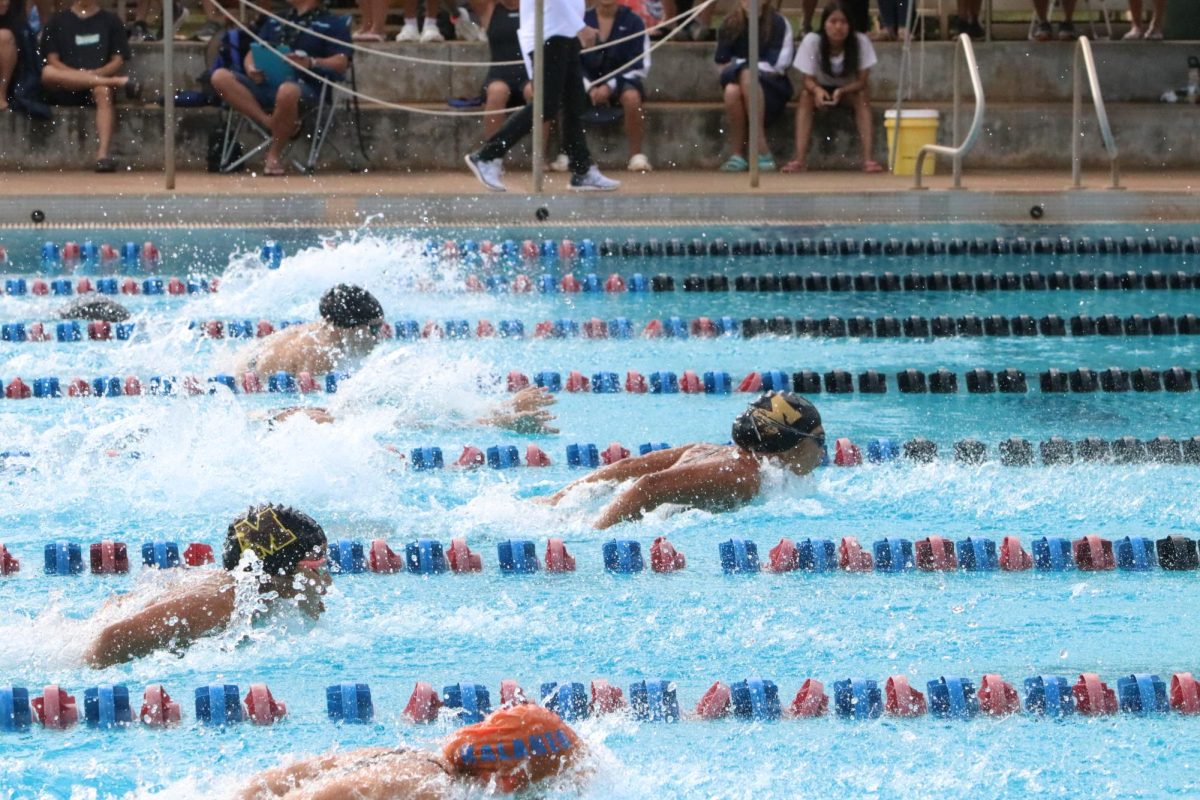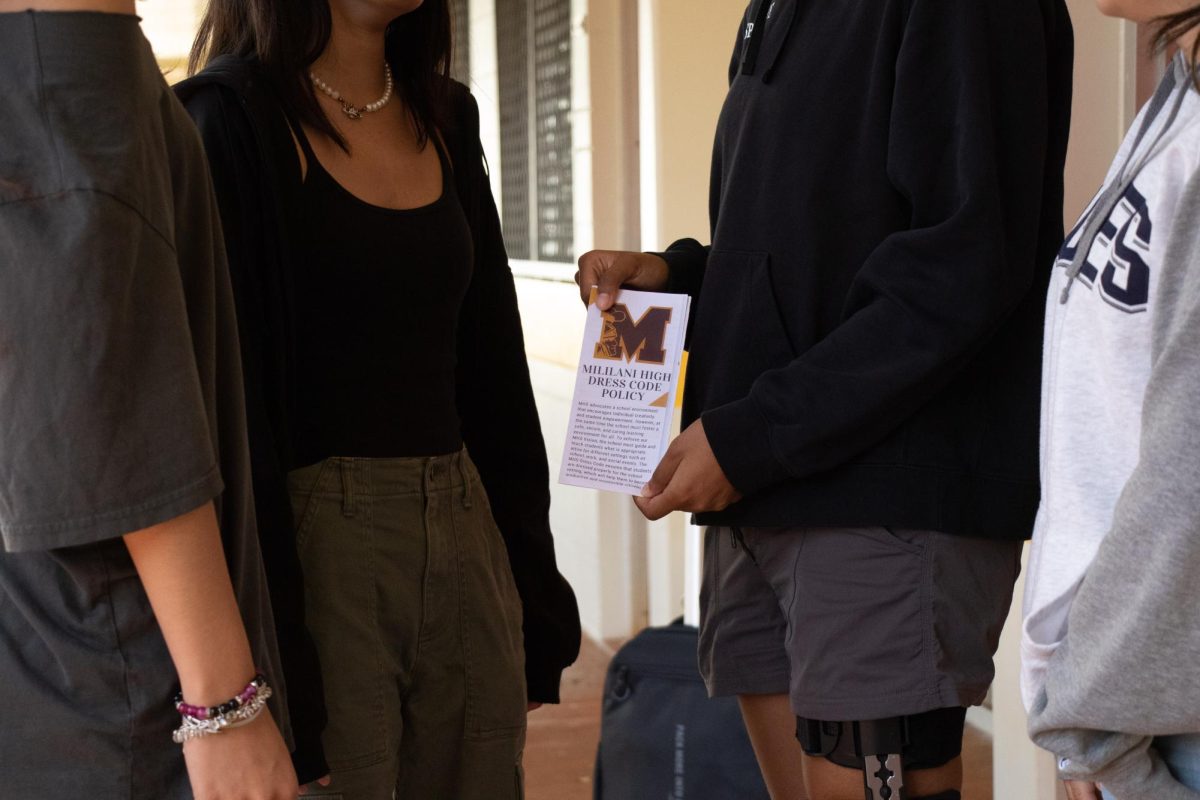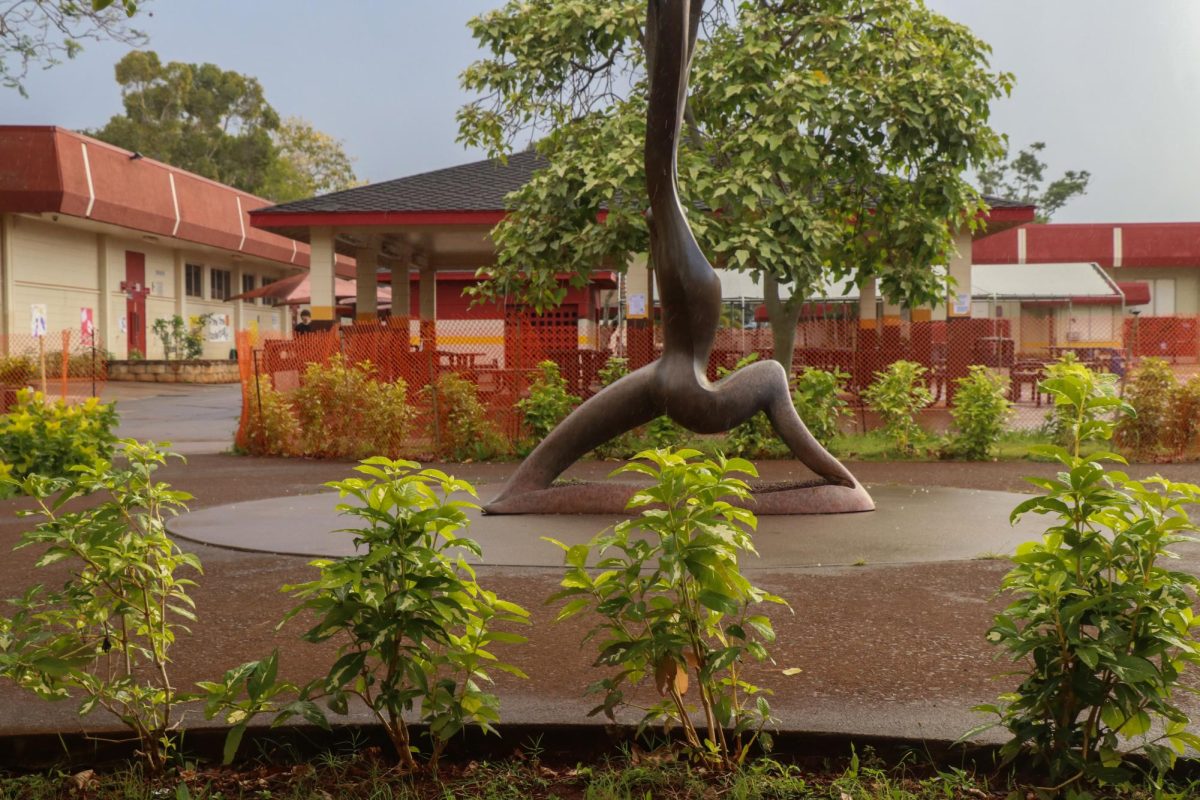Farm to School Reinventing Agriculture Field
November 12, 2019
On Oct. 21, members of the Mililani community, MHS faculty and students reinvented the agriculture field to promote farm fresh local food. Working in coordination with the Hawai’i Farm to School Hui program, — one of the programs under the Hawai’i Public Health Institute (HIPHI) — they cleared out the space in order to plant fruit trees and start their new garden.
“It can become a gathering place for our whole community. And I just think that we can teach — we can teach the elementary schools, we can teach our students, we can teach the whole community about sustainability, about culture, about agriculture,” said science teacher Jennifer Kuwahara. Senior McKenna Antolin added, “It would help us and other schools around the nation help us spread the word about what we can do to make our lives better and so many other people’s lives better.”
One of Principal Fred Murphy’s original visions was to bring in the ‘Aina Pono program so the school could provide local food for the cafeteria. MHS contacted the Farm to School Hui program once they decided to change the vision of their agriculture site. “So when we reached out to her, they have a garden to school program that they started to pilot, so she was hoping that we could come on as a pilot school to grow food to serve to the cafe,” said Kuwahara. Hawai’i Farm to School Hui Coordinator Lydi Bernal added, “My colleague Debbie Millikan — who oversees the O‘ahu Farm to School Network (part of the Hawai‘i Farm to School Hui) — visited MHS with Jenny. Then I proposed that we hold a community workday at the school during the month of October, which is Farm to School Month.”
The Farm to School Hui program had several sites that they would have their volunteers visit. One of these sites was the agriculture field at MHS. “We want to be able to support any school that needs help developing their agriculture education program, school garden program and other farm to school programming (e.g. healthy, locally sourced meals and snacks),” said Bernal.
The Professional Learning Community group (PLC) — Kuwahara, Hawaiian teacher Kekoa Wong and agriculture teacher Matthew Calica — worked together to organize the event. Bernal approached MHS and asked if they wanted adult volunteers to help out. “It kind of — we met weekly through our PLC group and it was just like kind of trying to figure out what we wanted to get done and what’s our goal for the site, ultimately what’s our vision, and what are the steps we need to take,” said Kuwahara. Bernal added, “As mentioned, we organized five HIPHI Perspectives Trips in celebration of Farm to School Month and sent emails to our statewide email list, announcing the events. I also communicated directly with several legislators. Senator Michelle Kidani — who represents Mililani in the Hawai‘i State Senate — attended the event.”
The event’s purpose was to start working on the garden which will eventually allow MHS to become more self-sufficient. After a few years, their newly planted trees will be able to produce fruit and serve the cafeteria. “Instead of bringing food from other places, we can just get it right there in our backyard. That’s how I think it will help our health. Just to get our voices out there so they know ‘Oh we’re doing this, we’re actually doing this, we can do this,’” said Antolin. Bernal added, “I think this project will help people know (and remember) how important it is to connect with nature and to know where our food comes from.”
This event was their first workday on the field. Some of the different things they worked on included removing invasive plants and weeds, planting ground cover, outlining plots, sheet mulching and planting trees. “I’m a part of Kumu Wong’s Aloha ‘Aina. We got the chance to clean up the areas, the actual areas he was responsible for. We tried to clean out all of the roots of the invasive trees, the California grass of course — that was the most biggest plant that was over there in the area,” said Antolin. Bernal added, “The space has come a long way since I first saw it a while back. I’m so proud of and thankful for the students, teachers and administrators who are contributing to the success of this very important project.”
For the students, this project had significant importance to them. For Antolin, the project meant unifying people despite their differences. “It means a lot to me because everybody can do it but nobody can get that much support from that much people,” said Antolin. “How it will benefit a lot of us is that it will show a lot of kids that there are many different ways we can help that community, help the society.”
Kuwahara added, “Some of the students would come out for class and they asked if they could stay longer because I think they felt they understood the importance of it. We talked to them in class about other models in the community, like the one at UH West Oahu and how we envision something similar here. They saw the long term goal and they realized they may not be a part of it, but their younger siblings or cousins will be able to eat the fruits of their labor and I think that really resonated with them.”
Progress of the field will continue throughout the year. Future plans include building a shade house that will help grow native plants which will be used as a teaching tool, building a hale for the community or school groups to gather and planting an herb garden for the culinary classes. “So the students will grow the plants and they will outplant them on campus and out in the forest to try and help them understand the importance of the watershed and keeping that watershed recharged with drinking water for us,” said Kuwahara.
What Kuwahara hopes for the garden is more community and school involvement. The goal is to work on the field and make changes to it at least once a quarter. For more information on the Farm to School Hui program, you can visit their website at https://www.hiphi.org/farmtoschool/



